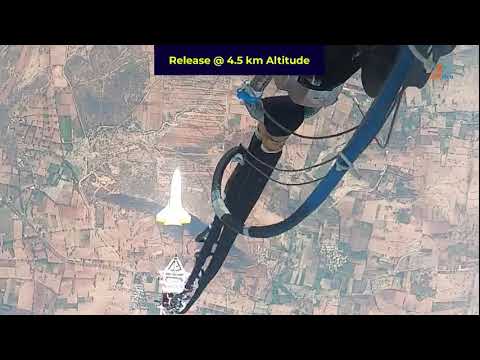Since 2016, the Indian Space Research Organisation (ISRO) has been developing a two-stage completely reusable launch vehicle. The plan is for the first stage to incorporate an air-breathing supersonic combustion ramjet (scramjet) engine with the upper stage a reusable orbiter that lands on a conventional runway at the end of its mission. A scaled-down prototype, called the Reusable Launch Vehicle-Technology Demonstrator (RLV-TD), was developed, starting in 2012, with the goal of performing four key tests to validate the design and operation of the orbiter.
In May 2016, the first RLV-TD performed the first test, the Hypersonic Flight Experiment (HEX) in which the vehicle was launched to an altitude of 65 km by a solid rocket booster, then entered the atmosphere at a velocity around Mach 5. The flight tested the vehicle’s ability to maneuver at hypersonic speeds, manage the transition to subsonic flight, and autonomously fly to a designated splashdown point in the Bay of Bengal. The flight was a success. There were no plans to recover the test vehicle.
On 2023-04-02, the second test in the program, Landing Experiment (LEX) was conducted. This test validated the final approach and landing of the vehicle on a runway, similar to the Approach and Landing Tests performed for the U.S. Space Shuttle in 1977. While the shuttle Enterprise was carried and released by a modified Boeing 747, the much smaller (6.5 metre length) RLV-TD was carried aloft by an Indian Air Force CH-47 Chinook heavy-lift helicopter and released at an altitude of 4.5 kilometres, where it dived to reach the approach speed, autonomously navigated to the runway, managing its energy, then touched down successfully. (The landing speed of 325 km/hour may seem extreme, but it’s actually slower than the Space Shuttle, which touched down around 350 km/hour.)
Planned future tests include an Orbital Return Flight Experiment (OREX) and a Scramjet Propulsion Experiment (SPEX).
